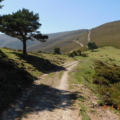In the highland interior of St. Ann Parish, far from the sandy beaches that define Jamaica’s tourist imagination, the small settlement of Watt Town transforms periodically into a place of sacred convergence. There are no monumental shrines here, no grand basilicas or formal processions. Yet each year, practitioners from across the island arrive in slow, steady waves—on foot, by bus, in clustered caravans—to participate in a form of pilgrimage that is deeply embodied and entirely rooted in place. This is Jamaican Revivalism in motion.
The revival ‘Pilgrimage to Watt Town’ has been inscribed to UNESCO’s List of Intangible Cultural Heritage on December 2024.
The Spiritual Grounding of Revivalism
Revivalism emerged in the mid-19th century in the wake of Emancipation, shaped by the fusion of African religious memory and Christian liturgical frameworks. It was not a simple blending, but a creative reassertion of African-descended cosmologies within a colonial world that sought to erase them.
Two dominant streams developed: 60 Order (Zion Revival), which leans toward Christian symbolism and structure, and 61 Order (Pukumina or Pocomania), which emphasizes spirit possession, drumming, and African ritual patterns. Both retain core elements drawn from Kongo cosmologies, Yoruba ritual logic, and the kinetic epistemologies of African-derived religious thought—where the sacred is accessed not by silence, but by sound, movement, and invocation.
In this context, the body is a medium of knowledge. The drum is not accompaniment but utterance. And the journey to places like Watt Town becomes a ritual act—a passage to ancestral presence, made present again through performance.
Watt Town: Geography of a Ritual Center
Tucked into a hilly, forested stretch of rural St. Ann, Watt Town does not announce itself as a spiritual capital. Its role becomes visible only during specific times in the religious calendar, particularly during Old Year’s Night (New Year’s Eve) and the Easter season, when Revivalist communities mobilize.
The town becomes what practitioners call a “ground”—a consecrated space prepared for spirit work. Temporary altars appear. Sacred clothes are hung. The ritual leaders, often referred to as “Mothers”, open the ceremonies with chants and prayers, invoking spirits, ancestors, and angels. Drums follow, steady and patterned, guiding the rhythm of the night.
For Revivalists, the “ground” is never fixed. It becomes sacred through use—activated by ritual, memory, and collective intention. Watt Town’s significance lies in its repeated role as a nexus of power—a place where spiritual authority is tested, affirmed, and renewed.
Mountain of Memory: Queen Nanny, Nanny Town, and Sacred Resistance in Jamaica
Pilgrimage Through Embodiment
Unlike classical pilgrimage models centered on relics or tombs, Revivalist gatherings in Watt Town are about embodied convergence. The journey itself is vital—participants come from across Jamaica, often from urban centers like Kingston or Montego Bay, carrying drums, ritual attire, and offerings. Movement is a sacred act: to leave home and arrive at the ground is to reenter the communal cosmology.
During the gatherings, participants engage in ring dances, trance states, and spirit possession, understood as forms of divine communication. Possession is not pathological; it is a means of accessing spiritual insight. The body becomes the site of negotiation between worlds—ancestral, divine, and living.
Revivalist leaders interpret these manifestations. They may receive visions, deliver healing, or resolve interpersonal or spiritual conflict. Authority is often matrilineal, and leadership is performative—established not by institutional hierarchy but by charisma, lineage, and demonstrated spiritual efficacy.
African Diasporic Continuities
Watt Town stands as a living archive of African diasporic continuity. The rituals practiced here draw upon Kongo conceptions of the cosmos, particularly the idea of the crossroads as a site of power and transformation. The circular dances mirror cosmograms. Ritual staffs and sacred colors follow diasporic codes found in Haitian Vodou, Cuban Palo, and Brazilian Candomblé.
Songs sung during ceremonies may blend English, African-intoned glossolalia, and fragments of ancestral languages. Drum patterns serve as both invocation and pedagogy – teaching rhythm, order, and ancestral presence. In this way, Revivalism preserves what Caribbean scholars like Kamau Brathwaite called “nation language”: a form of memory encoded in sound, cadence, and motion.
Sacred Place Without Monument
What makes Watt Town compelling is its quiet durability. Despite pressures from evangelical denominations, social stigmas, and the ongoing cultural dominance of formal Christianity, it continues to host expressions of faith rooted in the body and the land. It is not a religious tourism site. It is not curated for public consumption. It endures because it functions—ritually, culturally, spiritually—as a center of gravity for communities in search of continuity and presence.
In recent years, folklorists and cultural researchers have begun to recognize the importance of sites like Watt Town, not only as religious spaces but as cultural keystones. They represent survival strategies, creative adaptation, and communal resilience in the face of historical erasure.
A Ritual Cartography
Watt Town offers a different kind of map. Not one marked by waypoints and mileage, but one traced through ritual networks, drumming patterns, and seasonal return. It is a center not because of what was built there, but because of what happens there—again and again, across generations.
For those attuned to sacred geographies of the African diaspora, Watt Town remains a place where the veil thins, where history moves in circles, and where the ground, once danced upon, remembers.




